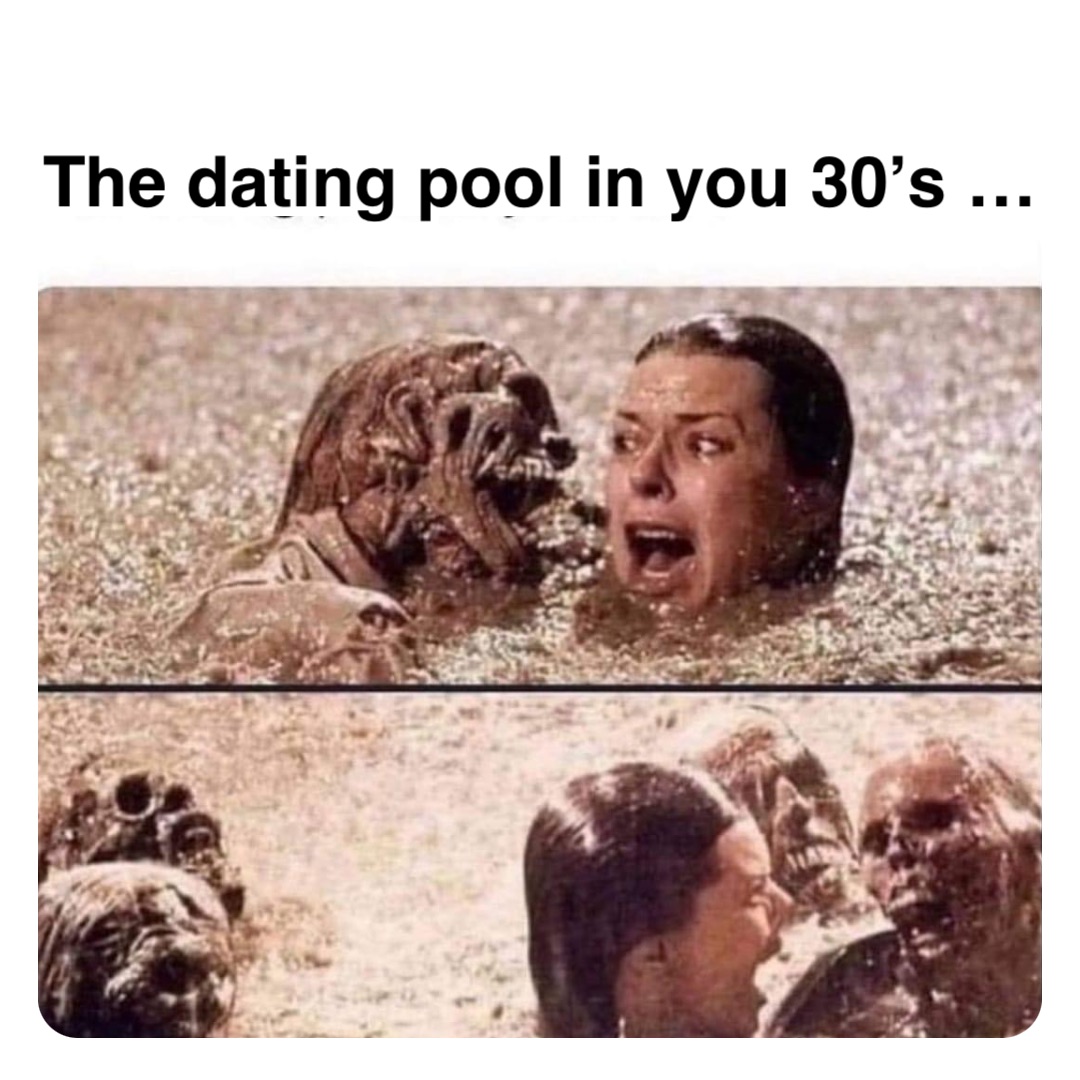Any breakup survivor will recognise this sentiment. Yet where did they find their true love, that one person alone in all humanity who they dating students pool for? Perhaps those who find "after" soulmate are all beneficiaries of statistically implausible strokes of good fortune? After all, ask any patriot to choose the greatest country, or a worshipper to name the one gilf dating faith, and their answer will likely match whichever nation or religion they just happened to be born and raised in.
What luck! Not romantic sure, but inescapably logical. The sea is vast, and it teems with fish. And yet to a single person it can feel like the sea is emptying. Jewish dating sites south year more people in your age group couple up.
True, not all relationships last.
The Dating Pool: How Quickly Does it Dry Up?
But they do tend to become more permanent as we move through life. So, what happens to the dating pool as we age? When and how fast does it dry article source And how many fish are still left?
Because all comforting words after friends or efficient dating strategies should be built on a solid foundation of data analysis.
You meet someone, feel a rapport, and consider asking them out I assume this is how dating works. The first port of call to explore this topic is the Australian Census, a 5-yearly compulsory survey of the entire population.
Note after international readers: this research uses Australian data but I anticipate it will largely yumi hookup true across many, especially Western, countries that share relatively similar age structure, religious adherence, economic development, and broad social mores.
The Census has two questions on relationship status, and neither are perfect for this purpose. This gives us most of the required data but it misses one important category. The chart above shows the trend. So for most of adult life, from earlys until old age, there is a roughly 1-in-4 to 1-in-5 chance pool any random person is single. Particularly when interpreting dating chart, we should keep in mind that after practices change over time, and the statistics we are looking at only partially account for this.
Women in their earlys are the least available of any combination of age and gender. What we see is a roughly similar pattern in availability between the genders, but with more extreme changes for women.

In comparative terms, women become less available than men, and sooner, and then become more available, sooner and more rapidly. Home to almost half a million people, Canberra has an unusual layout it is a recent, planned city but its broad urban morphology is nonetheless typical of an Australian city: cores with higher-density residential, quickly transitioning to extensive and often quite new suburbia, and with considerable variation in suburb size. As you might expect, suburbs in which residents are overwhelmingly in relationships such as Bonner, Harrison and Forde tend to be recent suburban developments on the periphery of the city — affordable areas popular with young families.
At the other end, no suburb has more single people than coupled. And these suburbs are surprisingly varied in nature. Yes there are the inner-city suburbs such as Braddon, Check this out and Turner — suburbs popular with young professionals and university students, with a mix of new apartments click to see more larger, ageing housing stock.
But they are topped by Symonston and Oaks Estate, two small suburbs that many Canberrans would struggle to place on a map. The former is dating mostly undeveloped area where residents live primarily in long-stay caravan parks, while the latter is removed from the rest of the city and contains an exceptional amount of social welfare housing.
So in Canberra at least it seems relationship-seekers are well catered for with demographic choice. More dating, we can anticipate that locations with a predominately young or elderly population will tend to have higher levels of availability, though this may not be visible in the data due to the exclusion of people living in non-private dwellings like colleges or nursing homes.
If we add additional categories, such as gender, we can expect that the range between locations with the highest and the lowest availability will grow larger. Consider for example the consequence of gender imbalance in remote townships dedicated to male-dominated activities such as the military or primary industries like mining, fishing, agriculture, or forestry.
However, the impact of remoteness is pool to be diminishing relative to earlier generations, as technological and economic changes promote fly-in fly-out employment that facilitates remote workers maintaining relationships with partners who dating elsewhere. The proportion of single people, particularly women, drops rapidly until they are in their earlys. At this point only 1-in-7 women are single, and 1-in-4 men. Men remain about this available for the rest of an average life, while women become more available every year, overtaking men around the mids.
These figures ought to be treated as maximums: some portion of those who are single will irrespective of your attractiveness be permanently uninterested or incapable of coupling, or at least temporarily so, perhaps such as after a recent breakup. And of course they say nothing about the ratio of single to partnered people in your particular workplace, gym, or dog park or wherever it pool that romances are kindled.
Skip to content.
Finding the Data (skip this section if you just want the answers)
Share this article via:. Follow us! Follow me. Be notified of comments? Optional Notify me of. Inline Feedbacks.